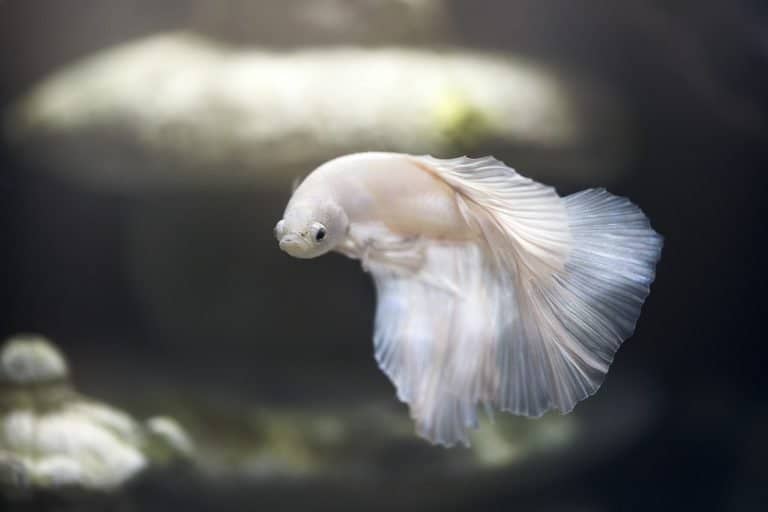Looming as a potential threat to the health of betta fish, head mouth fungus is a serious condition that can have detrimental effects if not addressed promptly. Betta fish affected with this condition may exhibit several alarming symptoms that every pet owner should be aware of. Recognizing the signs of head mouth fungus can be crucial in providing timely treatment and preventing further complications. In this informative blog post, readers will learn about the common symptoms of head mouth fungus in betta fish and understand the importance of prompt veterinary attention.
Key Takeaways:
- White patches: Look out for white patches on the head and mouth of your Betta fish, as this could be a symptom of a fungal infection.
- Loss of appetite: If your Betta fish is refusing food or showing a decrease in appetite, it could be a sign of head mouth fungus.
- Behavior changes: Pay attention to any changes in your Betta fish’s behavior, such as increased lethargy or appearing distressed, as these could indicate a fungal infection.
Identifying the Head Mouth Fungus in Betta Fish
Assuming a betta fish owner notices some unusual growth around the mouth, on the head, or gills, the fish might be suffering from head mouth fungus, also known as cotton wool disease. It is important to confirm the diagnosis, as other diseases like columnaris or velvet can have similar symptoms. It is always best to consult a vet or do thorough research by visiting a credible source like What Is Cotton Wool Disease in Betta Fish?.
Common Physical Symptoms
Physical symptoms of head mouth fungus in betta fish include the presence of whitish, cotton-like growths around the mouth, head, or gills. These growths can appear fuzzy and may resemble a cotton tuft. In severe cases, the fungus can also cause erosion of the affected areas, leading to visible damage on the fish’s head and mouth region.
Behavioral Changes and Symptoms in Betta Fish
In addition to the physical symptoms, betta fish suffering from head mouth fungus may exhibit behavioral changes. They may become lethargic, lose their appetite, or show signs of distress. Other behavioral symptoms may include rubbing against surfaces, a decrease in swimming activity, and an overall decrease in activity levels. These changes can indicate that the fish is experiencing discomfort and should be addressed promptly.
Causes of the Head Mouth Fungus in Betta Fish
While Betta fish are generally resilient creatures, they are not immune to developing infections such as head mouth fungus. Understanding the causes of this condition is essential in preventing and treating it effectively.
Environmental Factors
Environmental factors can play a significant role in the development of head mouth fungus in Betta fish. Poor water quality, overcrowding, and inadequate tank maintenance can all contribute to a weakened immune system, making the fish more susceptible to fungal infections. Additionally, extreme fluctuations in water temperature and stressed living conditions can also trigger an outbreak of head mouth fungus. Assume that maintaining a clean and stable environment is crucial in preventing this condition.
Dietary Factors
Proper nutrition is vital for the overall health and immune function of Betta fish. Overfeeding can lead to leftover food and waste in the tank, creating an environment conducive to fungal growth. Additionally, a diet lacking in essential nutrients and vitamins can weaken the fish’s immune system, making them more susceptible to infections. This highlights the importance of providing a balanced and varied diet to ensure the optimal health of Betta fish. This includes feeding them high-quality pellets, frozen or live foods, and vegetables.
Treatment and Prevention of Head Mouth Fungus in Betta Fish
Your betta fish has been diagnosed with head mouth fungus, and now it’s time to take action to treat the condition and prevent it from happening again in the future.
Common Treatments
Common treatments for head mouth fungus in betta fish include medicated baths, antibiotic treatments, and antifungal medications. In severe cases, a veterinarian may need to be consulted for more intensive treatment. It is important to follow the recommended dosage and duration of treatment to ensure that the fungus is completely eradicated. Additionally, it is crucial to monitor the fish closely during the treatment period for any signs of improvement or worsening of the condition.
Preventative Measures for Betta Fish Owners
Preventative measures for betta fish owners include maintaining clean and well-filtered water in the fish tank, providing a balanced diet, and ensuring that the tank environment is free of any potential sources of infection. It is also important to minimize stress on the fish, as stress can lower their immune system and make them more susceptible to infections. Betta fish owners should also quarantine any new fish or plants before introducing them into an established tank to prevent the spread of diseases.
By taking these important measures, betta fish owners can help ensure the health and well-being of their beloved pets and reduce the likelihood of head mouth fungus or other infections occurring.
To wrap up
In conclusion, identifying the symptoms of head mouth fungus in betta fish is crucial for quick and effective treatment. Owners should be vigilant in observing their fish for signs of white or gray patches, difficulty eating, excessive mucus production, or lethargy. Prompt action and proper care can help a betta fish recover from this common fungal infection and prevent further complications.




